-
ORIGINAL ARTICLE07-29-2024
Sexual counseling for people with acute coronary syndrome: educational video development
Revista Brasileira de Enfermagem. 2024;77(3):e20230416
Abstract
ORIGINAL ARTICLESexual counseling for people with acute coronary syndrome: educational video development
Revista Brasileira de Enfermagem. 2024;77(3):e20230416
DOI 10.1590/0034-7167-2023-0416
Views0See moreABSTRACT
Objective:
to assess validity evidence of an educational video on safe sexual activity after acute coronary syndrome.
Method:
study in three phases: video development; content validity analysis by 11 experts; and analysis of validity based on response processes by seven people with coronary disease. The content validity ratio (CVR) was calculated with critical values for the second phase of 0.63 and for the third of 1.0.
Results:
the video addressed the importance of resuming sexual activity and positions that consume less energy, clinical warning signs, the importance of adhering to treatment and a welcoming environment for sexual practice. A CVR above the critical value was obtained with a total of 4 minutes and 41 seconds.
Conclusion:
the educational video brings together adequate content validity evidence and can be used as a tool for patients after acute coronary syndrome.
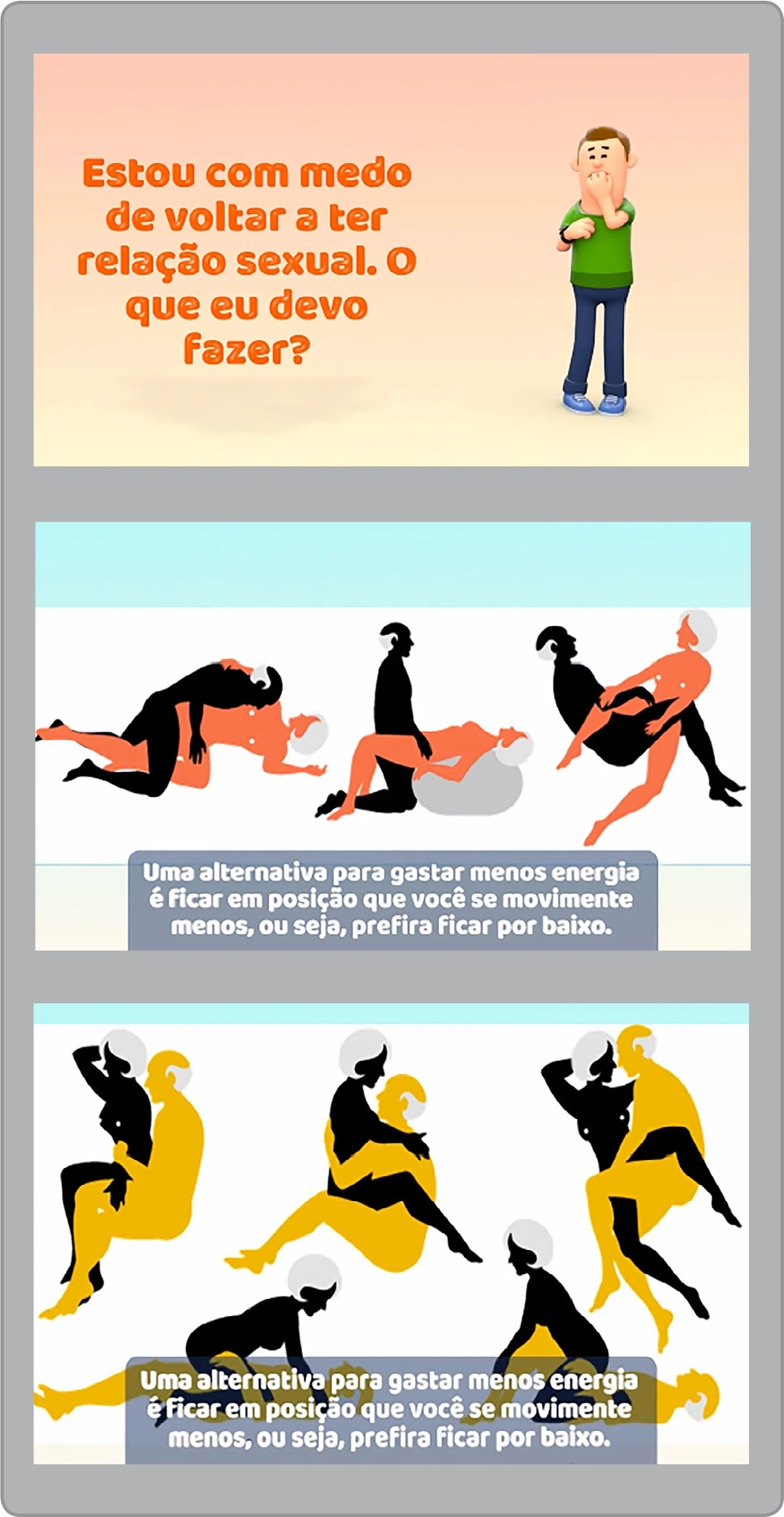
-
REVIEW07-29-2024
Utilization of local pressure devices in pain management during injections: scoping review
Revista Brasileira de Enfermagem. 2024;77(3):e20230399
Abstract
REVIEWUtilization of local pressure devices in pain management during injections: scoping review
Revista Brasileira de Enfermagem. 2024;77(3):e20230399
DOI 10.1590/0034-7167-2023-0399
Views0See moreABSTRACT
Objective:
to map scientific evidence regarding the use of local pressure devices in pain relief during injection procedures in patients.
Methods:
scoping review, following the recommendations of the JBI Manual for Evidence Synthesis and PRISMA-ScR, with searches conducted in the PubMed, EMBASE, CINAHL, LILACS, and PsycINFO databases, without temporal restrictions and with a cutoff date of March 2023.
Results:
a total of 1,514 studies were identified, with 20 articles included in the final sample. The ShotBlocker® device was utilized during subcutaneous and intramuscular injections in children and adults, proving beneficial in reducing pain, anxiety, and fear associated with the procedure.
Final considerations:
the ShotBlocker® is a low-cost, easy-to-use device that can enhance nursing clinical practice during painful procedures. However, studies involving the Brazilian Pikluc® device are scarce. Further research involving both local pressure devices is recommended.
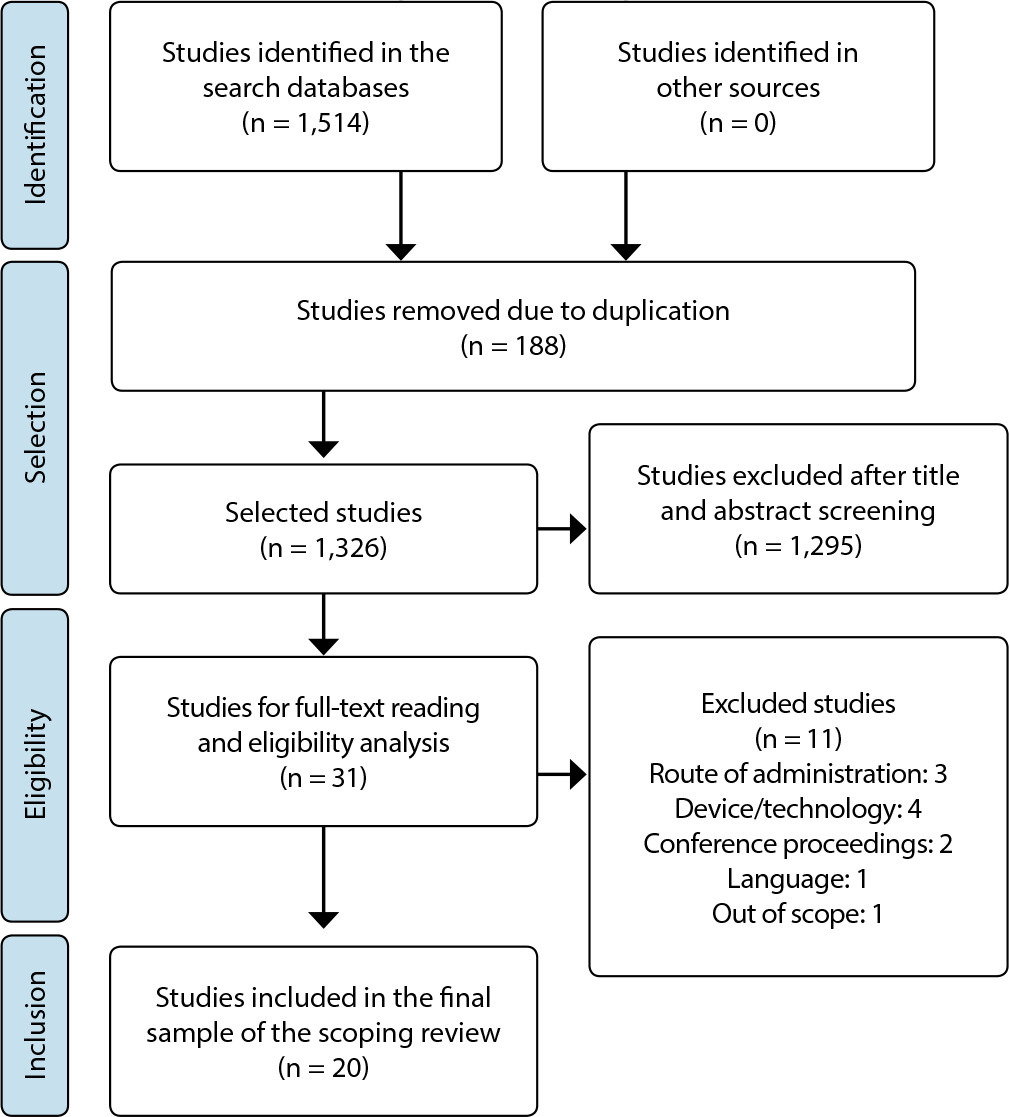
-
ORIGINAL ARTICLE07-29-2024
Evidence of validity of the Risk Self-Medication Questionnaire focused on Health Literacy
Revista Brasileira de Enfermagem. 2024;77(3):e20230386
Abstract
ORIGINAL ARTICLEEvidence of validity of the Risk Self-Medication Questionnaire focused on Health Literacy
Revista Brasileira de Enfermagem. 2024;77(3):e20230386
DOI 10.1590/0034-7167-2023-0386
Views0See moreABSTRACT
Objectives:
to analyze the validity evidence of the internal structure of the Risk Self-Medication Questionnaire Focused on Health Literacy.
Methods:
a psychometric study with 499 adults. The internal structure was assessed with exploratory and confirmatory factor analysis to prove the adjustment. Internal consistency was measured by composite reliability and McDonald’s omega coefficient (ω).
Results:
the parameters revealed a model of 35 items distributed across four factors, explaining 56% of the total variance, with factor loadings ranging from 0.31 to 0.85 and adequate communalities. Accuracy (0.79
Conclusions:
an instrument was obtained with good evidence of structural validity for measuring self-medication.
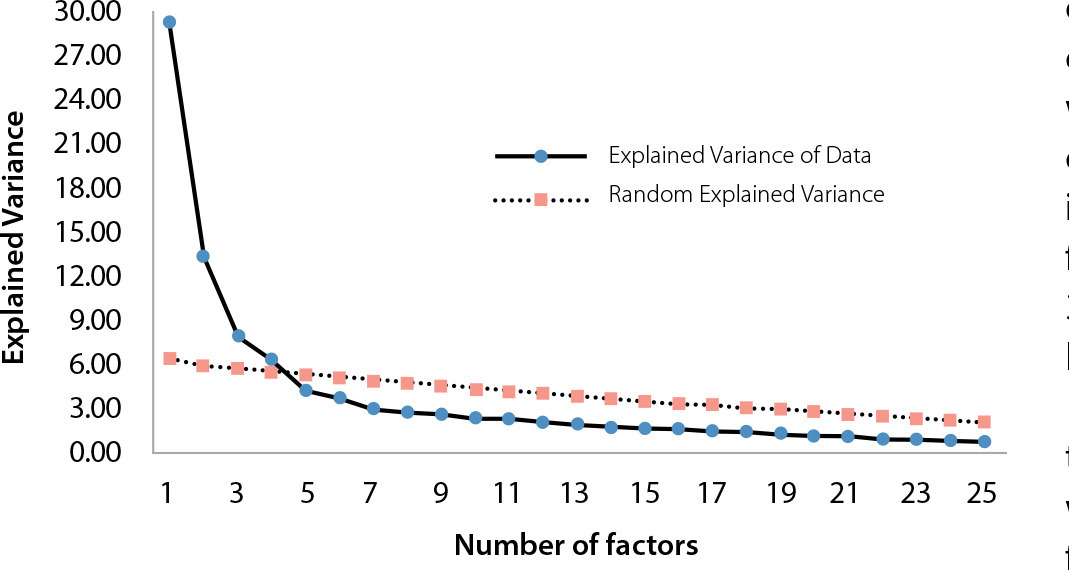
-
ORIGINAL ARTICLE07-29-2024
Nurses’ perspectives on nurses’ work methods
Revista Brasileira de Enfermagem. 2024;77(3):e20230374
Abstract
ORIGINAL ARTICLENurses’ perspectives on nurses’ work methods
Revista Brasileira de Enfermagem. 2024;77(3):e20230374
DOI 10.1590/0034-7167-2023-0374
Views0See moreABSTRACT
Objectives:
To analyze nurses’ perspectives on nurses’ work methods in the hospital context.
Methods:
A descriptive study with a qualitative approach was conducted in a hospital in northern Portugal, involving 17 nurses. Semi-structured interviews were used for data collection. Data collected between May and June 2023 underwent content analysis, supported by Atlas.ti software.
Results:
Three thematic areas emerged: “Nurses’ work methods in a hospital context,” highlighting the conception and components of work methods and the methods in use; “Implementation of nurses’ work methods,” emphasizing influencing factors and challenges to implementation; and “Impact of nurses’ work methods on patients, nurses, and institutions.”
Final Considerations:
Nurses’ work methods constitute the structure of nursing care. Some factors influence and some challenges arise in the implementation of these methods, producing impacts on patients, nurses, and institutions.

-
ORIGINAL ARTICLE07-29-2024
Evaluation of software technical quality for collecting data from patients under palliative care
Revista Brasileira de Enfermagem. 2024;77(3):e20230435
Abstract
ORIGINAL ARTICLEEvaluation of software technical quality for collecting data from patients under palliative care
Revista Brasileira de Enfermagem. 2024;77(3):e20230435
DOI 10.1590/0034-7167-2023-0435
Views0See moreABSTRACT
Objectives:
to evaluate software technical quality for collecting data from patients under palliative care.
Methods:
this is methodological technology evaluation research, according to the technical standard International Organization for Standardization/International Electrotechnical Commission 25040-2011, developed from August 2021 to August 2023. Eight nurses and eight information technology professionals participated as judges, who evaluated six quality characteristics and 23 subcharacteristics. Items that reached a percentage of agreement greater than 70% were considered suitable.
Results:
the characteristics evaluated by nurses/information technology professionals received the following percentages of agreement, respectively: functional suitability (94%-84%); reliability (100-70%); usability (89.9-66.8%); performance efficiency (95.8%-86.1%); compatibility (95.8-79.6%); and safety (96%-83.4%).
Conclusions:
the software was considered suitable in quality evaluation to offer support to nurses in collecting patient data under palliative care, with the potential to operationalize the first Nursing Process stage.
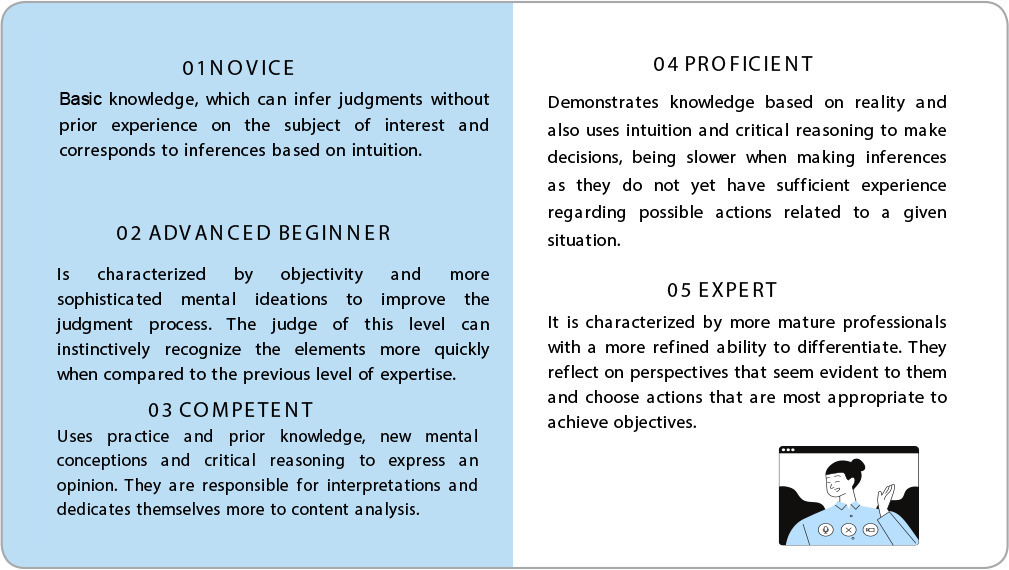
-
ORIGINAL ARTICLE07-29-2024
Excessive daytime sleepiness in nursing technicians: association with sleep quality and memory
Revista Brasileira de Enfermagem. 2024;77(3):e20230332
Abstract
ORIGINAL ARTICLEExcessive daytime sleepiness in nursing technicians: association with sleep quality and memory
Revista Brasileira de Enfermagem. 2024;77(3):e20230332
DOI 10.1590/0034-7167-2023-0332
Views0See moreABSTRACT
Objective:
to investigate excessive daytime sleepiness prevalence among nursing technicians and the association with sleep quality and memory.
Methods:
a cross-sectional, inferential study, carried out in a hospital unit in the state of Goiás between December 2020 and January 2021. Assessments were carried out using the Epworth Sleepiness Scale, the Pittsburgh Sleep Quality Index and the Prospective and Retrospective Memory Questionnaire, instruments validated for the Brazilian context. Bivariate and multivariate logistic regression analyzes were performed.
Results:
the sample consisted of 189 nursing technicians with a 40.9% excessive daytime sleepiness prevalence. In multivariate models, excessive daytime sleepiness was not associated with sleep quality, however there was a significant association with overall memory failures.
Conclusions:
study results demonstrate a high excessive daytime sleepiness occurrence, an association with overall memory failures and the need for psychosocial interventions for nursing technicians.
-
ORIGINAL ARTICLE07-29-2024
University Student Depression Inventory, Brazilian Version, Construct Assessment
Revista Brasileira de Enfermagem. 2024;77(3):e20230232
Abstract
ORIGINAL ARTICLEUniversity Student Depression Inventory, Brazilian Version, Construct Assessment
Revista Brasileira de Enfermagem. 2024;77(3):e20230232
DOI 10.1590/0034-7167-2023-0232
Views0See moreABSTRACT
Objectives:
to assess the University Student Depression Inventory, Brazilian version (USDI-BR), construct.
Methods:
a methodological study carried out with a snowball probabilistic sample, consisting of 334 undergraduate and graduate students. Confirmatory factor analysis, reliability using McDonald’s omega coefficient and Cronbach’s alpha were performed. Principal component analysis was performed using the varimax rotation and oblimin rotation, using the Kaiser-Meyer-Olkin criteria, Bartlett’s test of sphericity and scree plot.
Results:
the USDI-BR presented an internal consistency of items of ω = 0.95 and remained with 30 items, with the addition of 1 factor (Death wish and social withdrawal), totaling 4 factors.
Conclusions:
the USDI-BR has evidence that points to its validity and also its internal consistency, deserving that new studies be carried out to expand the evidence of its psychometric properties.
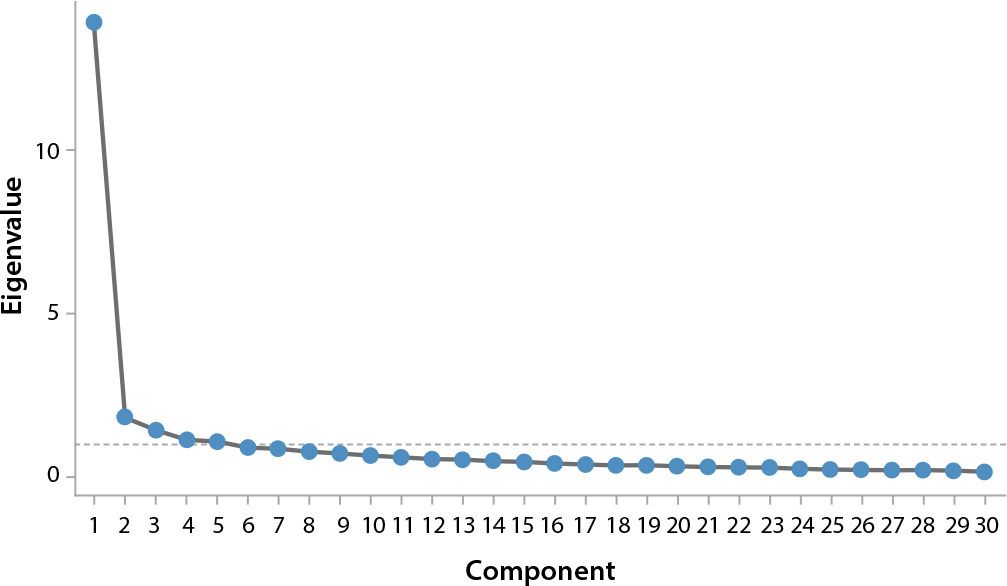
-
ORIGINAL ARTICLE07-29-2024
Fuzzy Logic: vulnerability of women who have sex with women to sexually transmitted infections
Revista Brasileira de Enfermagem. 2024;77(3):e20230271
Abstract
ORIGINAL ARTICLEFuzzy Logic: vulnerability of women who have sex with women to sexually transmitted infections
Revista Brasileira de Enfermagem. 2024;77(3):e20230271
DOI 10.1590/0034-7167-2023-0271
Views0See moreABSTRACT
Objective:
To describe the possibility of applying Fuzzy Logic in analyzing the vulnerability of Women Who Have Sex with Women to Sexually Transmitted Infections/HIV/AIDS.
Methods:
We developed a Fuzzy Logic system with 17 input variables and one output variable, using data related to vulnerability in a municipality located in the Midwest region of the State of São Paulo, Brazil.
Results:
The factor with the greatest positive impact was the confirmation that a low understanding of Sexually Transmitted Infections/HIV/AIDS is associated with higher vulnerability. Conversely, the statement “Not disclosing sexual activity to healthcare professionals,” where individuals do not admit to having sex with women, had the least impact.
Conclusions:
Fuzzy Logic facilitates the identification of vulnerability, expressed through the analysis of interaction between variables in each dimension. This makes it a promising method to assist in analyzing the vulnerability of specific populations.
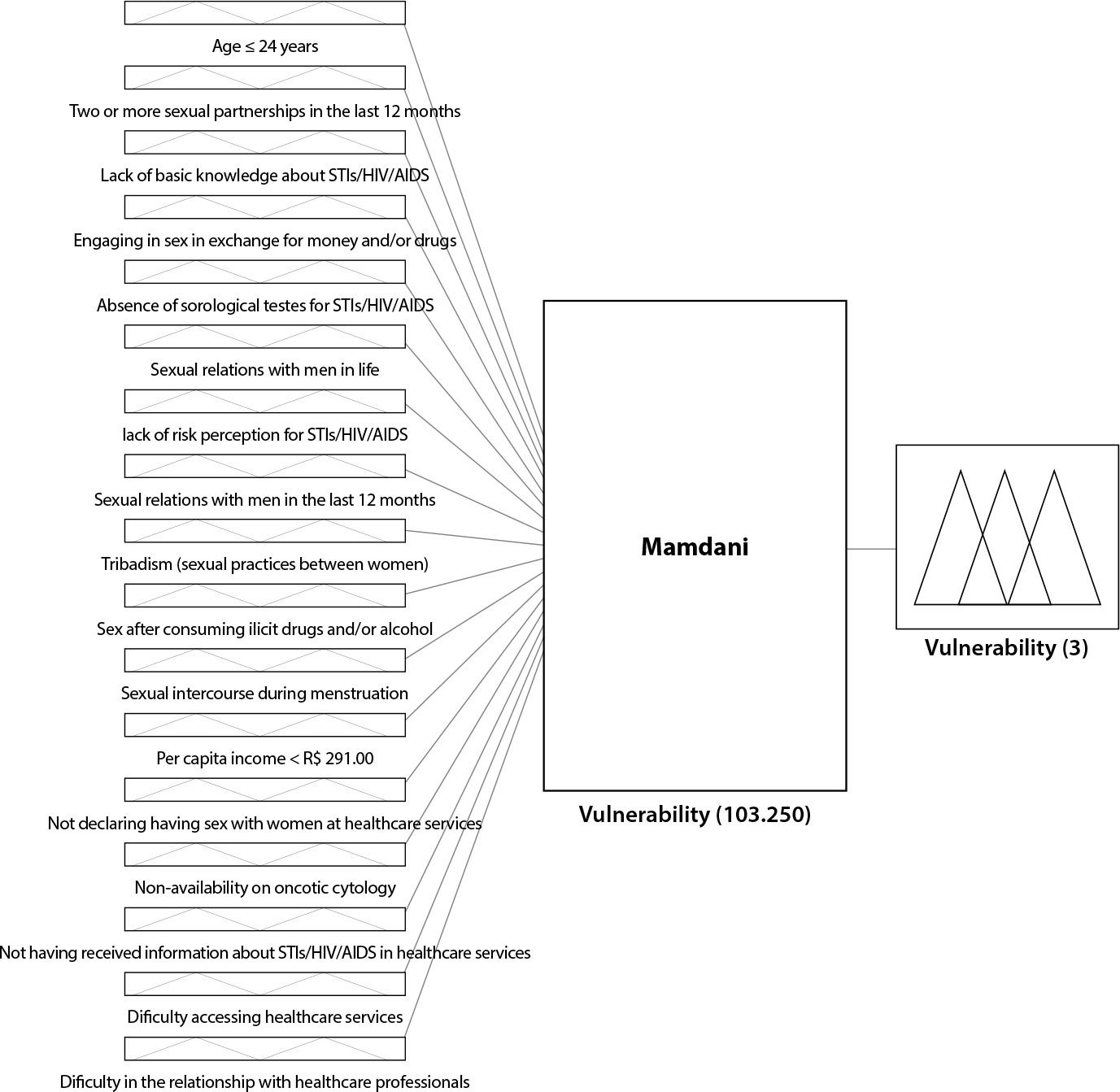
-
ORIGINAL ARTICLE07-18-2022
Nursing in Primary Health Care: association between leadership, psychological capital, and burnout implications
Revista Brasileira de Enfermagem. 2022;75:e20210942
Abstract
ORIGINAL ARTICLENursing in Primary Health Care: association between leadership, psychological capital, and burnout implications
Revista Brasileira de Enfermagem. 2022;75:e20210942
DOI 10.1590/0034-7167-2021-0942
Views0See moreABSTRACT
Objectives:
to verify the association between authentic leadership and burnout syndrome in Primary Health Care nursing professionals and analyze the relationship between positive psychological capital and burnout syndrome in subordinate nursing professionals.
Methods:
a field, descriptive-exploratory, cross-sectional study with a quantitative approach, developed with the nursing team, in Basic Health Units in the city of São Paulo, with the application of the sociodemographic questionnaires, Burnout Characterization Scale [Escala de Caracterização do Burnout], Authentic Leadership Questionnaire and Psychological Capital Questionnaire.
Results:
in leaders’ perception, there was no evidence of significant associations between burnout and authentic leadership scales. There was a significant negative association of the burnout scale dimensions with the leadership dimensions regarding the subordinates. There was evidence of significant negative associations in the burnout scores with the scores of the psychological questionnaire dimensions.
Conclusions:
in nursing, burnout is associated with authentic leadership and psychological capital.
-
ORIGINAL ARTICLE04-07-2023
Suicide attempts by adolescents assisted in an emergency department: a cross-sectional study
Revista Brasileira de Enfermagem. 2023;76(2):e20220137
Abstract
ORIGINAL ARTICLESuicide attempts by adolescents assisted in an emergency department: a cross-sectional study
Revista Brasileira de Enfermagem. 2023;76(2):e20220137
DOI 10.1590/0034-7167-2022-0137
Views1See moreABSTRACT
Objectives:
to identify and characterize the care provided to adolescents admitted to an emergency department due to a suicide attempt.
Methods:
an observational, cross-sectional, descriptive study with a retrospective approach, carried out with medical records of adolescents aged 10 to 19 admitted for suicide attempts, between January 2015 and July 2020, in an emergency department. Data were subjected to descriptive and inferential analysis.
Results:
eighty-eight service occurrences were identified, mainly to females, exposed to multiple risk factors. Exogenous intoxication was the main method used, occurring at home and on weekdays. There were systemic repercussions, requiring multiple interventions and hospitalizations. Only 26% of cases were notified.
Conclusions:
adolescents treated for suicide attempts were exposed to multiple risk factors, with intoxication as the main means used. There is concern about the underreporting of cases and the logic of clinical care and medicalization.
-
10-16-2020
The unacceptable tragedy of maternal mortality associated with COVID-19: (re)politicization of women’s health and rights and the position of Brazilian nursing
Revista Brasileira de Enfermagem. 2020;73:e73supl04
Abstract
The unacceptable tragedy of maternal mortality associated with COVID-19: (re)politicization of women’s health and rights and the position of Brazilian nursing
Revista Brasileira de Enfermagem. 2020;73:e73supl04
DOI 10.1590/0034-7167.202073supl04
Views0In 2020, the year designated as “The International Year of the Nurse and the Midwife”, the Nursing Now strategy () further justifies the re-existence of nursing, with strategies, innovative and transformative actions in facing new challenges that are imposed, especially, from the context of the COVID-19 pandemic.Brazilian nursing workers – at the frontline of care […]See more -
ORIGINAL ARTICLE07-01-2020
Perceptions of pharmaceutical services among elderly people on polymedication
Revista Brasileira de Enfermagem. 2020;73(5):e20190305
Abstract
ORIGINAL ARTICLEPerceptions of pharmaceutical services among elderly people on polymedication
Revista Brasileira de Enfermagem. 2020;73(5):e20190305
DOI 10.1590/0034-7167-2019-0305
Views0See moreABSTRACT
Objectives:
Describe the importance of guidelines provided during pharmaceutical consultation about compliance with medication therapy based on interviews with polymedicated elderly patients.
Methods:
A qualitative methodological study carried out during consultations with 40 elderly patients of both genders at the Health Care Center for Elderly Patients and Caregivers. The study used the technique of content analysis, applying a questionnaire with two open questions.
Results:
Two categories and eight subcategories emerged after the transcription of interviews and exhaustive reading of the data. The category “Pharmaceutical consultation as an education instrument for the self-care of polymedicated elderly patients” presented the highest frequency. The subcategory with the highest frequency was “Concern of elderly patients about self-care”.
Final Considerations:
In the case of polymedicated elderly patients, pharmaceutical consultation is an important education instrument which, through the provision of pharmaceutical guidelines, allows the minimization of concerns about pharmacotherapy, contributing to compliance and self-care.
-
ORIGINAL ARTICLE02-03-2023
Quality of life and satisfaction of students with auriculotherapy in the covid-19 pandemic: a quasi-experimental study
Revista Brasileira de Enfermagem. 2023;76:e20220522
Abstract
ORIGINAL ARTICLEQuality of life and satisfaction of students with auriculotherapy in the covid-19 pandemic: a quasi-experimental study
Revista Brasileira de Enfermagem. 2023;76:e20220522
DOI 10.1590/0034-7167-2022-0522
Views0See moreABSTRACT
Objectives:
to evaluate the quality of life before and after the application of auriculotherapy and the satisfaction of university students with the treatment during the covid-19 pandemic.
Methods:
quasi-experimental study conducted with 44 students in a University Health Center. The intervention consisted of ten sessions of auriculotherapy focusing on emotional changes with quality of life assessment before and after treatment. The study also investigated the satisfaction concerning the intervention.
Results:
predominated among the students: women, from health courses, in use of psychotropic drugs and complaining of emotional changes. There was a statistically significant increase in all domains of quality of life, and students were satisfied with the treatment.
Conclusions:
auriculotherapy improved the quality of life of university students during the covid-19 pandemic, and the level of satisfaction with the treatment was high.
-
09-24-2022
Effects of auriculotherapy in the treatment of nausea and vomiting: a systematic review
Revista Brasileira de Enfermagem. 2022;75(1):e20201350
Abstract
Effects of auriculotherapy in the treatment of nausea and vomiting: a systematic review
Revista Brasileira de Enfermagem. 2022;75(1):e20201350
DOI 10.1590/0034-7167-2020-1350
Views0See moreABSTRACT
Objectives:
to identify the effectiveness of auriculotherapy in the treatment of nausea and vomiting through a systematic review of the scientific literature.
Methods:
it was performed a systematic review of the literature making use of the following data basis: The Scopus, PubMed, CINAHL (Cumulative Index to Nursing and Allied Health Literature), Web of Science, LILACS and Cochrane databases were used. Articles from complete research from randomized controlled clinical trials that describe using auriculotherapy in nausea and vomiting treatment were selected, without restriction of date or language.
Results:
eleven articles were selected for analysis. The majority approached the population in surgical situations, followed by patients undergoing chemotherapy and pregnant women. As for results, 81% (n=8) of the articles reported that nausea and vomiting were lower in incidence and/or intensity in the intervention group.
Conclusions:
the review provided relevant data on the effects of auriculotherapy in nausea and vomiting treatment, with a decrease in the intensity and frequency of these symptoms in different populations.

-
ORIGINAL ARTICLE06-08-2020
Teaching in health residencies: knowledge of preceptors under Shulman’s analysis
Revista Brasileira de Enfermagem. 2020;73(4):20180779
Abstract
ORIGINAL ARTICLETeaching in health residencies: knowledge of preceptors under Shulman’s analysis
Revista Brasileira de Enfermagem. 2020;73(4):20180779
DOI 10.1590/0034-7167-2018-0779
Views0See moreABSTRACT
Objectives:
to understand how the pedagogical knowledge that integrates the basic knowledge of teaching is perceived by preceptors in residents’ teaching-learning process.
Methods:
a qualitative research conducted by semi-structured interview from December 2013 to July 2014, with 31 preceptors of residency programs of three university hospitals in northeastern Brazil. For analysis, the Grounded Theory’s proposal was used and supported by Atlas ti(r) 7.0 software.
Results:
preceptors integrate preceptorship with basic teaching knowledge proposed by Lee Shulman, with emphasis on General Pedagogical Knowledge when seeking strategies to better work on specific and disciplinary content, and Pedagogical Content Knowledge when adapting content to make it comprehensible to residents.
Final Considerations:
the study allowed us to understand how Shulman’s basic knowledge of teaching is perceived by preceptors. It is recognized that they integrate knowledge into the preceptorship, highlighting the General and Pedagogical Content Knowledge.
-
ORIGINAL ARTICLE09-01-2021
Clinical Decision-Making in Nursing Scale (CDMNS-PT©) in nursing students: translation and validation
Revista Brasileira de Enfermagem. 2021;74:e20210032
Abstract
ORIGINAL ARTICLEClinical Decision-Making in Nursing Scale (CDMNS-PT©) in nursing students: translation and validation
Revista Brasileira de Enfermagem. 2021;74:e20210032
DOI 10.1590/0034-7167-2021-0032
Views0See moreABSTRACT
Objectives:
to validate, for the Portuguese population, the Clinical Decision-Making Nursing Scale© (CDMNS©).
Methods:
this methodological study involved 496 nursing students who filled in a questionnaire created using sociodemographic and academic data, and the scale to evaluate the making of decisions in nursing.
Results:
the confirmatory factorial analysis showed that the adjustment of the factorial structure has good quality, being made up by three factors (X2/gl = 2.056; GFI = 0.927; CFI = 0.917; RMSEA = 0.046; RMR = 0.039; SRMR = 0.050). For the scale to be reliable, it had to include only the reliability of the scale required it to be constituted by 23 items, with correlation values that varied from 0.184 and 0.610, and a global Cronbach’s Alpha of 0.851, which showed its good reliability.
Conclusions:
the CDMNS-PT© is valid and reliable, showing a high potential to be used in clinical practice and investigation.

Search
Search in:
Nuvem de Tags
Adolescente (85) Atenção Primária à Saúde (239) COVID-19 (91) Criança (91) Cuidados de Enfermagem (269) Educação em Enfermagem (151) Educação em Saúde (139) Enfermagem (930) Enfermagem Pediátrica (86) Estudantes de Enfermagem (77) Estudos de Validação (131) Família (87) Idoso (208) Promoção da Saúde (99) Qualidade de Vida (104) Saúde do Trabalhador (86) Saúde Mental (145) Saúde Pública (82) Segurança do Paciente (150) Tecnologia Educacional (100)



